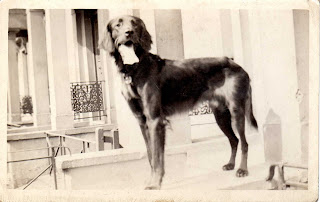
Yesterday, April 10th 2010, Chelsea beat Aston Villa 3-0 to go through to their seventh FA Cup final in seventeen years. Winners of four of the last thirteen editions, it's strange to think that from their foundation in 1905 until 1994 Chelsea had only reached the final three times, losing in 1915 to Sheffield United and in 1967 to Spurs, before finally winning the FA Cup for the first time in 1970. So, if Chelsea fans might lately have become slightly blasé about winning trophies, this was not the case back in 1970.
Chelsea had beaten Watford 5-1 on 14 March at White Hart Lane to go through to the final against Leeds United, to be played on April 11, exactly 40 years ago today. In the intervening four weeks the World's End turned Chelsea blue. Even though dad was a Fulham supporter, that didn't prevent his 11-year-old son from filling their windows with bright blue posters courtesy of the evening papers. The "parade", or row of shops on the south side of the King's Road between the Community Centre (ex-Chelsea Police Station) and the World's End Pub, joined in too - the local greengrocer's, for example:
As always, Slaidburn Street wouldn't be outdone; its kerb stones were painted blue and white, not at the instigation of the local council, I presume. This photograph, unfortunately in black and white and not blue and white, was published in The Times on match day:
Here's another similar picture that appeared in the press:
Everyone wanted to have their picture taken down Slaidburn Street. Here is yet another snap of a group of skinheads posing in the notorious cul-de-sac:
The above picture is currently available as one of a series of Christmas cards issued by London Books and featuring the messages: 'Merry Christmas from the Chelsea Youth 1970' and 'Happy Christmas from the Chelsea Shed'.
The match was played at Wembley as always. After 90 minutes the score was 2-2 and remained 2-2 after extra time, so a replay was arranged for Wednesday 29 April at Old Trafford. Once again the sides were level at 1-1 at the end of regular time; then Chelsea's David Webb headed home an extra-time winner from an Ian Hutchinson trademark long-throw.
The replay had been an evening kick-off and was watched by a record TV audience of 32 million. At the end what seemed like the entire population of Chelsea came out into the streets to celebrate. The very next day there was a victory parade down the King's Road, ending up at Fulham Town Hall. I was a pupil at Park Walk at the time. Needless to say we were given the morning off school so we wouldn't miss all the fun.
Below Ron Harris and Peter Bonetti can be seen holding up the FA Cup at the World's End.
A brief footnote. While checking my facts for the above I noticed that the first ever FA Cup final was won by Wanderers F.C. in 1872. In those days football was a game for gentlemen, and by that I mean public schoolboys and ex-public schoolboys. Wanderers F.C. was in fact a team of Old Harrovians, with important sounding names such as William Kenyon-Slaney and Reginald de Courtenay Welch. Originally formed as Forest Football Club in 1859 and playing in Epping Forest, they became Wanderers F.C. in 1864 after "wandering" to West London where they were to play at both Battersea Park and Lillie Bridge.
Having beaten Royal Engineers 1-0 to win the cup in 1872, Wanderers were given a bye through to the following year's final, as were the rules in those days, to play against Oxford University, who had qualified though the knockout stages. They were also allowed to choose the venue and the match was played on 29 March 1873 at Lillie Bridge Grounds, which was situated just south of West Brompton Station and only about 300 yards north of where Stamford Bridge would be built in 1876.
Wanderers won the cup for the second year running, beating Oxford University 2-0. The attendance of 3,000 was considered low and attributed to the Boat Race occurring later that day, so few turned up or stayed for the whole duration of the game.
Of course this was not the only time the FA Cup final would take place in the West Brompton area. From 1920 to 1922, the final was played at Stamford Bridge itself, before moving to its new home of Wembley in 1923.






























